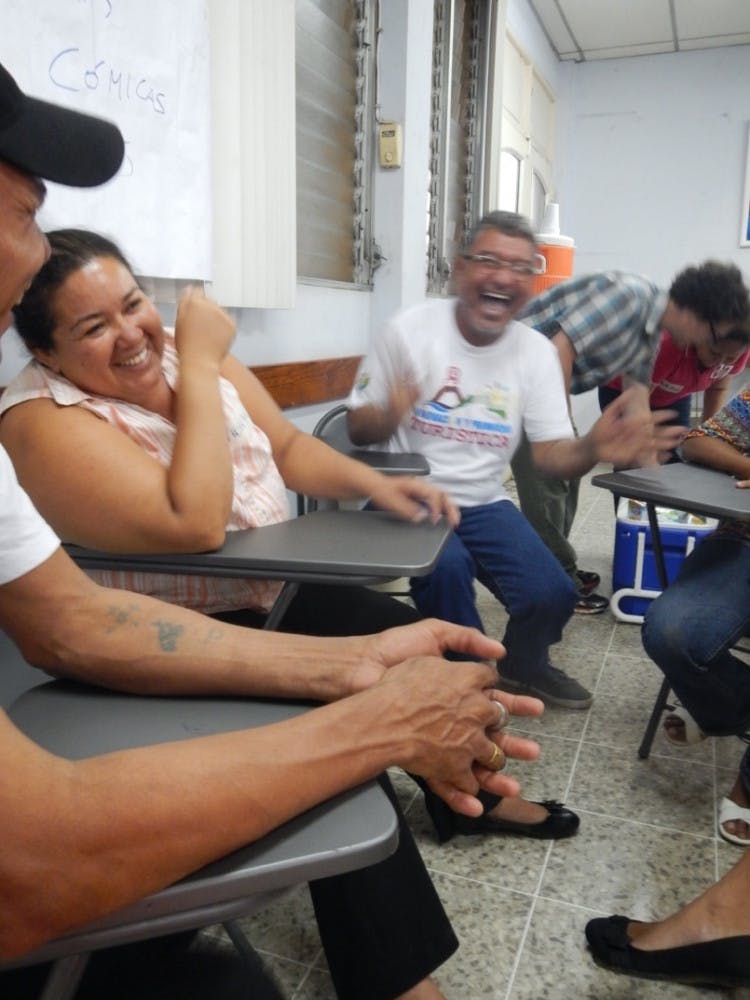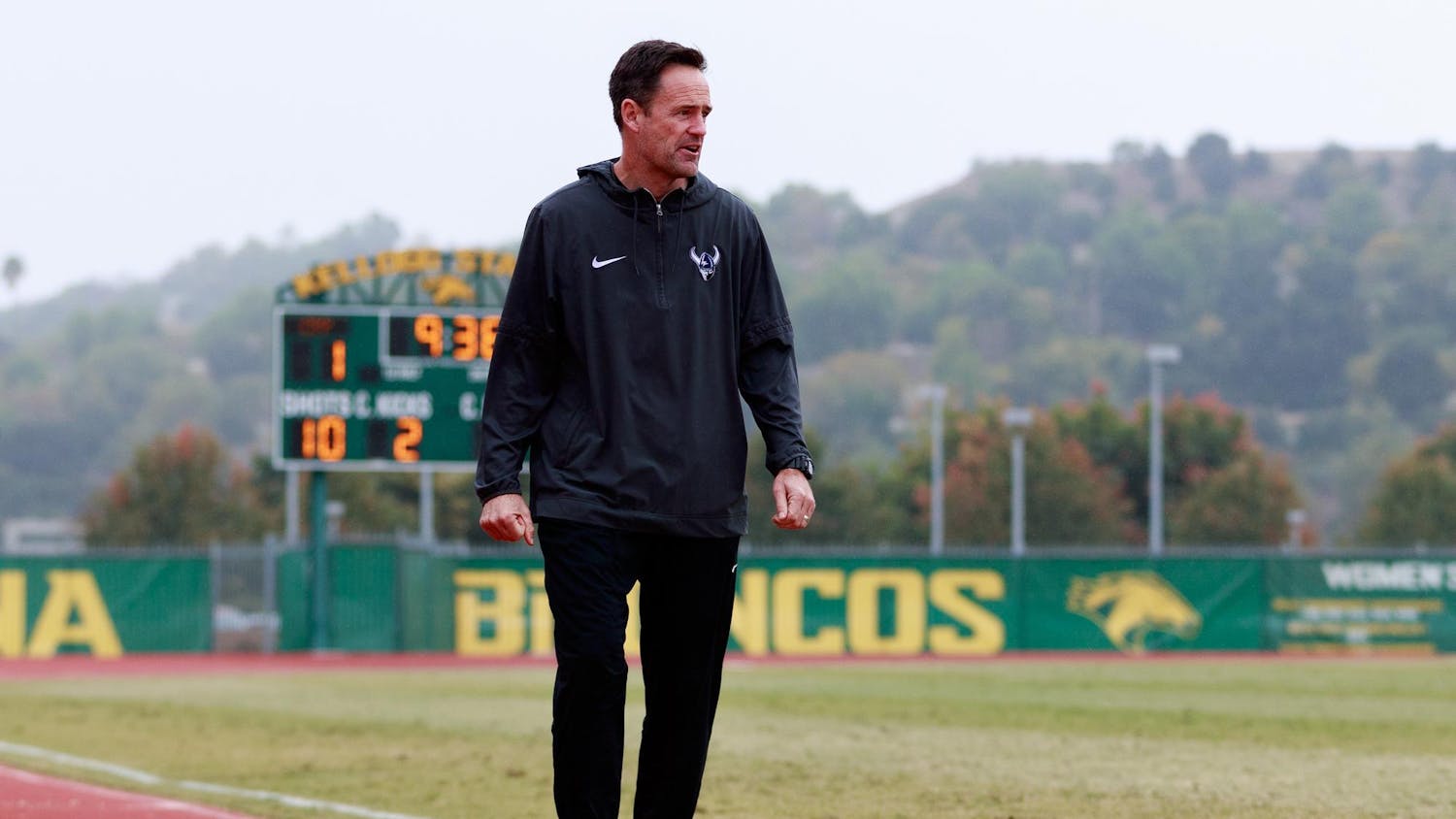Proyecto Buen Vivir explores what makes a healthy city with residents of Ciudad Sandino

By Elisa Espinoza and Olivia Palmer
In Ciudad Sandino, Nicaragua, community members are reimagining the future of their city through El Proyecto Buen Vivir, or The Living Well Project.
For the past five years, Josh Fisher, an anthropology professor at Western Washington University, has been doing participatory research in Ciudad Sandino. This research, funded by the National Science Foundation, has focused on exploring what living well in a city looks like.
Up until the beginning of the COVID-19 pandemic, Fisher and Alex Nading, his research partner, engaged 40 participants in quarterly experimental workshops to help answer that question. What began with group interviews has expanded to creative conversations and activities like improvised skits, Fisher said.
“The conversation we couldn’t stop having was about how interesting this place, Ciudad Sandino, was as an environment,” Nading said. “What does it mean to start this new city and try to make it work and imagine what its future might look like?”
Nading, an associate professor of anthropology at Cornell University, said Ciudad Sandino offers a unique opportunity because the city was founded in 1972.
Another aspect of the city that has impacted Fisher and Nading’s research is its cultural dynamics, which they have grown familiar with through years of internships and research in the community.
‘City of walls’
Fisher said Latin American cities are often known as “cities of walls” because of their class structures. Those barriers make a collaborative approach to research all the more important.
Collaborative research focuses on doing research with people, rather than on them. Unlike traditional anthropological research, which is often one-sided, collaborative research involves investment in a community.
“When you’re working with groups, one of the tricks is to get people to talk to one another, especially in cities that are so divided,” Fisher said.
Nading said he and Fisher have been intentional about including participants from a wide variety of backgrounds in their workshops, including bureaucrats, health field workers, those in the food and market economies and teachers.
For some, Fisher said, these workshops have been the first time people from different groups in the city have ever spoken with one another.
Maria Zepeda, program director of El Proyecto Buen Vivir, said this collaborative research has been an effective way of including all members of the community in the project.
“We even have contact with people who pick up garbage in the streets,” Zepeda said. “We don’t make them feel bad. We make them feel like they’re part of this process and that they’re valuable.”
Participants contribute to research in numerous ways. Nading said members of the cohort have done things like going out into the city with cameras to take photos of beautiful, interesting and concerning areas, and visiting markets to better understand each other's budgets.
Karen López, coordinator of Proyecto Buen Vivir, said the photo activity was one of her favorites. She said they took pictures of the busiest places of the city to document the contamination surrounding them and how much it would improve as the project advanced.
“It is very interesting because that way we could see the before and after that resulted from the workshops and educating the community,” López said.
Participants have also done improv skits and socio dramas to explore concepts. Fisher recalled one skit featuring a meeting between the mayor and his constituents where the mayor was a stray dog and the women were birds.
By encouraging group storytelling, Nading said he has seen group dynamics shift.
“We got people who had not said more than a few words in the first couple workshops telling us these hilarious folk stories, or stories about the time during the revolution they left the city for the first time to go into the mountains to bring in the coffee harvest,” Nading said. “That was a participatory space that also allowed people to see each other in a more kind of rich contour.”
Zepeda said she has observed changes in Ciudad Sandino since the start of the research.
One focus of the workshops has been improving the environment, garbage collection, recycling and tree planting. Zepeda has noticed how people are more conscious and there is less littering happening.
“For us, it is important for the college student and the professional to those who are on the streets or don’t have a formal profession to acquire a level of [environmental] consciousness,” Zepeda said.
Lopez attributed the positive changes to their efforts to invigorate the community.
“[The project] is impactful because people realize that there is motivation to keep the community clean,” Lopez said.
Fisher said this kind of research helps bring together many aspects of living in a city.
“What our work demonstrates is that what it means to live well is an ecological question,” Fisher said. “But ecological questions have to do with public health, and public health has to do with larger questions of wellbeing and economic viability.”
Escaping anthropology’s troubled past
Fisher and Nading’s research in Ciudad Sandino fits into a larger effort to work toward decolonizing the field of anthropology. Fisher said participatory research plays an important role in shifting away from anthropology’s colonial beginnings.
“One thing we have to do as a field is to kind of upset those dynamics and find new ways of learning with people rather than studying them,” Fisher said. “It means decentering the researcher and deprivileging the researcher in relation to the subject matter.”
Amy Kennemore is an associate professor in the anthropology department of the University of California, San Diego, who has conducted collaborative research in Bolivia. She said collaborative research has challenged traditional methods.
“[Collaborative research] has been very productive because it has pressed researchers, and especially within anthropology, to reconsider the relationships they have with whom they’re doing research,” Kennemore said.
Walter Little, chair of anthropology at the University at Albany, said collaborative research involves making commitments to a community.
“You cover the basic buy-in by speaking the language and by participating in various aspects of [a participant’s] life,” Little said. “Most of it is just sitting down and seeing how things unfold organically, and being part of conversations that are already ongoing rather than coming up with your own to serve some research interest.”
Zepeda said this community-centered approach has made a big difference in the success of Fisher and Nading’s research in Ciudad Sandino.
“I think that you get better results when you’re in contact with the people, when you talk in a personal way and when you don’t make them feel like you know better than them, but you acknowledge their experiences,” Zepeda said. “One of the advantages of this project is that both Alex and Josh already knew the community.”
To Fisher, participants are collaborators and co-theorizers.
“You do this research with people, not on them, and you find ways to collaborate with people not because you’re just curious about something, but because it matters and we’re all trying to build a better world,” Fisher said.
Communities must not only be included, but also be allowed to have a voice in the direction of the research, Kennemore said.
“How can we better collaboration to really center what they’re already analyzing and understanding in their communities?” Kennemore said.
Little said there are many ethical considerations to take into account when doing participatory research. Researchers should make sure participants know why they’re there and where the data will go.
It’s also important for researchers to acknowledge power dynamics.
“You’re at a level of vulnerability and dependency on people there. At the same time, you also have the last word,” Little said.
Kennemore said collaborative research is thought to resolve the ethical tensions and dilemmas of traditional research because it’s more inclusive. However, she thinks anthropologists must still consider the ways in which their research might affect a community.
“You can kind of put those ethical questions on the table, versus pretending that they’re going to be resolved by the nature of collaboration itself,” Kennemore said.
Research goes remote
Since the start of the pandemic, the nature of Fisher and Nading’s research has changed. They’ve had to put off experimental workshops and have been keeping in contact with participants via WhatsApp.
Although the pandemic creates challenges, Nading said it also brought an opportunity. COVID-19 presents a new set of questions for him and Fisher to discuss with participants when they return.
“We’ve been learning a lot about how tightly knit different members of this city are and how community initiatives actually come to take shape,” Fisher said, noting Ciudad Sandino’s response to the pandemic. “We’ve been learning from afar.”
Zepeda and López said the pandemic prevented them from proceeding with their plan to conclude Proyecto Buen Vivir.
They were planning to have presentations and a gallery to inform authorities, professors, students and community members about the positive impact the research has had in the city, Zepeda said.
In the future, Zepeda said she hopes the project continues to positively impact the community.
“From all the processes that we’ve done, we can create new projects. I hope this will be the mother who will birth children in the future as additional projects related to the topic,” she said.
Research with community members has revealed much about the dynamics of Ciudad Sandino, but Fisher said it has also had an impact on his work at Western.
“The kinds of strategies that I develop in a classroom turn into methodological designs for research in Nicaragua, but at the same time I’m learning from Nicaraguan teachers about Nicaraguan strategies for teaching and bringing those back,” Fisher said.
For Fisher, learning does not stop when he leaves Ciudad Sandino.
“We don’t have two separate jobs, one as teacher, one as researcher, but one job,” Fisher said. “And we move between these spaces and learn from those different experiences.”





